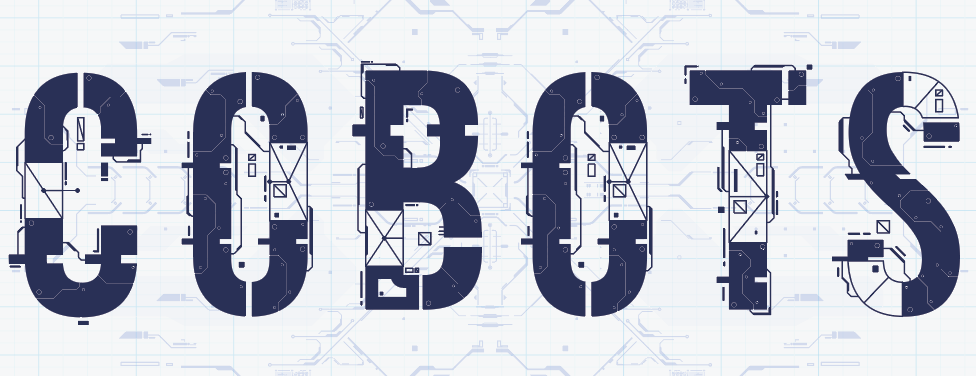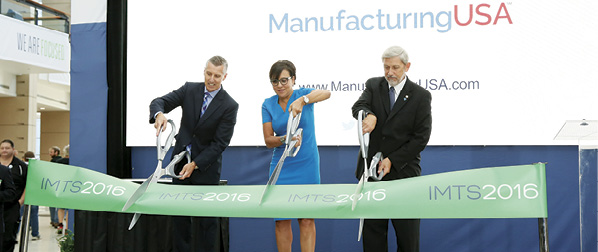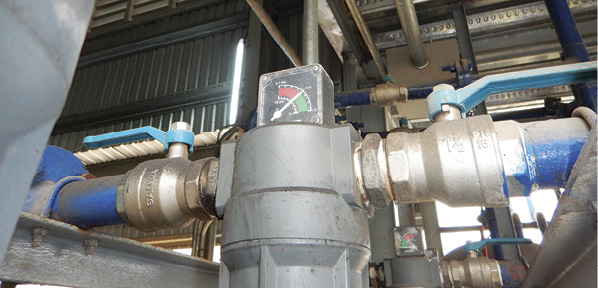4 Common Misconceptions About Cobots
By Buckley Brinkman, Executive Director/CEO of the Wisconsin Center for Manufacturing and Productivity

It has been nearly six decades since the first industrial robots rolled onto a General Motors assembly line in Trenton, New Jersey. Today, a new generation of collaborative robots is changing how the manufacturing sector operates. These semi-intelligent machines are driving growth and improving efficiency not only for the GMs of the world, but also for small and medium-sized manufacturers (SMMs) as well.
According to the Robotics Industries Association, a collaborative robot, also known as a cobot, is specifically designed to work directly with humans, side by side, within a defined collaborative workspace. Most weigh under 80 pounds and take up mere inches of space. Cobots free employees from tedious, repetitive activities so they can focus on tasks that require more advanced skills. Specifically, collaborative robots can be quickly programmed to streamline such tasks as:
- quality inspections,
- polishing,
- machine tending,
- screw driving,
- injection molding,
- assembly, and
- pick and place.
Robotic technologies have never been more accessible. Collaborative robots are enabling SMMs to compete against their deeper-pocketed counterparts. Increasingly, forward-thinking SMMs are using collaborative robotic technology as a formidable ally to help level the playing field.
According to Dan Ignasiak, president of South Erie Manufacturing Company (SEPCO), a small company with 35 employees that specializes in machined metal components for the transportation industry, “This kind of technology will attract more young people into manufacturing. And if our company didn’t keep up with technology, I figure we’d be out of business in less than 10 years due to the advancing nature of the industry.”
For every SMM integrating robotic technologies into their operations, I see many more missing an opportunity to accelerate business as they cling to common misconceptions about this new generation of automation. These myths include:
1. Myth: Cobots are only for large manufacturers.
Fact: Cobots are ideal for SMMs. Unlike industrial robots, they are less expensive, take up little space, and do not require extensive training to operate. When Dan and his team at SEPCO started working with Northwest Pennsylvania Industrial Resource Center, part of PA Manufacturing Extension Partnership (MEP) and the MEP National Network, they knew they needed to embrace new technologies to capitalize on new business and remain competitive. The result: SEPCO eliminated the need to purchase another machine center, improved process flow, and made operators more effective. Today, Dan expects to increase sales by $60,000 and plans to add new jobs. Further, he estimates saving $75,000.
2. Myth: Cobots are dangerous.
Fact: Employee safety is an imperative for manufacturers seeking to integrate humans and machines on the factory floor. That is one reason that the manufacturing sector is increasingly embracing cobots. Their safety is what sets them apart from their industrial robot counterparts. Cobots are designed to mimic human actions. They operate at lower payloads and speeds and are equipped with safety systems like automatic shutoff sensors. These safety systems respond to unsafe human proximity, which allow cobots to operate in the same work area as humans.
3. Myth: Cobots destroy jobs.
Fact: Using Cobots in industrial settings may enable a company to create and retain jobs. Integrating cobots into the day-to-day operations can relieve workers from dangerous, strenuous, or repetitive tasks. It can also open the door for new jobs that require different skill sets, resulting in no net loss of jobs. No machine can replace the critical thinking, decision-making, and creativity of humans. Further, an increase in productivity from cobot integration can prompt additional hiring. RevMedx is the maker of XSTAT, a product that provides fast-acting hemorrhage control to stabilize a wounded patient for transport. RevMedx employees 25 people. When product demand required the company to expand production quickly, my colleagues at the Oregon MEP advised RevMedx on robotic solutions to dramatically increase product production. By employing collaborative robots in the production process, RevMedx not only increased production yield by an estimated 10 times, but the company was able to add four new jobs – a 16% increase in staff.
4. Myth: Cobots are too difficult to integrate into current processes and require a dedicated IT department to maintain.
Fact: Their ease of use is one of the key factors that make cobots so appealing to SMMs. They do not require factory renovations or costly installation projects. Further, they do not require advanced degrees or expertise in proprietary programming languages. Many cobots can be programmed through simple apps or by physically moving the unit to “teach” motion.
Beyond the myths, one thing is very clear – collaborative robots give SMMs an important competitive edge. They are good for business, good for manufacturing workers, and good for the U.S. economy.
For more information, visit www.nist.gov/mep or www.wicmp.org/.
This article was published previously on the Manufacturing Innovation Blog and is reprinted with permission of the author. For more information, visit www.nist.gov/blogs/manufacturing-innovation-blog.







